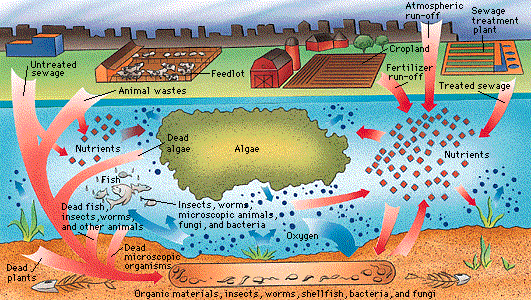Using the aquatic species Daphnia, commonly referred to as “water fleas,” scientists at North Carolina State University (NC State) determined that exposure to the insecticide pyriproxyfen impacted multiple generations, ultimately resulting in more male offspring, and causing reproductive problems in female offspring. Lead author Gerald LeBlanc, PhD, notes, “This work supports the hypothesis that exposure to some environmental chemicals during sensitive periods of development can cause significant health problems for those organisms later in life –and affect their offspring and, possibly, their offspring’s offspring.” The study, published in the journal PLoS One, provides the scientific community with new information on how organisms respond to the environmental signals resulting from pesticide exposure.
Environmental cues normally determine whether the Daphina offspring will be male or female, according to the researchers. This study is part of an investigation to understand the mechanisms involved with these environmental cues. The NC State team had previously identified the hormone methyl farnesoate (Mf) as an important factor in determining the sex of the organisms at the embryotic stage. The scientists exposed Daphnia to varying levels of the pesticide pyriproxyfen, an insecticide that mimics the Mf hormone. The exposure resulted in Daphnia producing more male offspring, and less offspring in general. Higher doses exacerbated the effects.
“At high concentrations, we were getting only male offspring, which is not good. Producing fewer offspring, specifically fewer female offspring, could significantly limit population numbers for Daphnia,” Dr. LeBlanc says.
Even low dose exposures, as low as 71 parts per trillion, had significant impacts on the reproductive capabilities of the organisms. At this concentration Daphnia still produced some female offspring, but those females experienced long-term reproductive effects, and produced significantly lower numbers of offspring even though they had not been exposed to the insecticide since birth.
“We now want to know specifically which genes are involved in this sex determination process,” Dr. LeBlanc says. “And, ecologically, it would be important to know the impact of changes in population dynamics for this species. Daphnia are a keystone species — an important food source for juvenile fish and other organisms.”
This study follows a long line of research showing the propensity for pesticides to affect reproductive and developmental health, even at low levels of exposure. As Dr. LeBlanc notes, pesticide exposures during sensitive periods in an organism’s development can cause long-term impacts. In an April 2012 study, researchers from the University of Pittsburgh detailed how the widely used herbicide Roundup can induce morphological changes in frog tadpoles. The researchers explained that the herbicide may be activating the developmental pathways used for anti-predator responses. This corresponds closely with results from the current study, which showed ability of pesticides to skew the environmental cues the organism would receive in a normal setting.
Evidence of multi-generational impacts from pesticide exposure is not isolated to animals like the water flea. A 2007 scholarly review, entitled “Pesticides, Sexual Development, Reproduction and Fertility: Current Perspective and Future Direction,” written by Theo Colborn, PhD and Lynn Carroll, PhD, pointed to studies linking the legacy chemical DDT to transgenerational health effects. Prenatal exposure to organochlorine pesticides has been linked to ADHD. An in-utero exposure of organophosphate pesticides has been linked to brain abnormalities after birth. These chemicals may also affect the length of pregnancy and birth weight of infants. The herbicide atrazine has been linked to increased incidences of both the congenital disorder gastroschisis and choanal atresia in areas where the chemical is more widely used. The widely applied mosquito repellent DEET has been shown to have the ability to cross the placental barrier, and women who applied insect repellents have an 81% increase of a male child developing the penile birth defect hypospadias.
Unfortunately, the public is not adequately protected by EPA’s current pesticide review process. An enlightened policy approach to proposed or continued toxic chemical use, in an age where the adverse effects have been widely and increasingly documented, is to first ask whether there is a less toxic way of achieving the toxic chemical’s intended purpose. Simply, “Is there another practice that would make the substance unnecessary?” Given the large number of studies in Beyond Pesticides’ “Pesticide Induced Diseases Database” linking pesticides to long term developmental and reproductive effects, lawmakers should consider the benefits of this policy approach.
Sources: Science Daily, http://www.beyondpesticides.org
http://www.enewspf.com/latest-news/science/science-a-environmental/4246…
Citation: LeBlanc GA, Wang YH, Holmes CN, Kwon G, Medlock EK (2013) A Transgenerational Endocrine Signaling Pathway in Crustacea. PLoS ONE 8(4): e61715. doi:10.1371/journal.pone.0061715

- Login om te reageren
